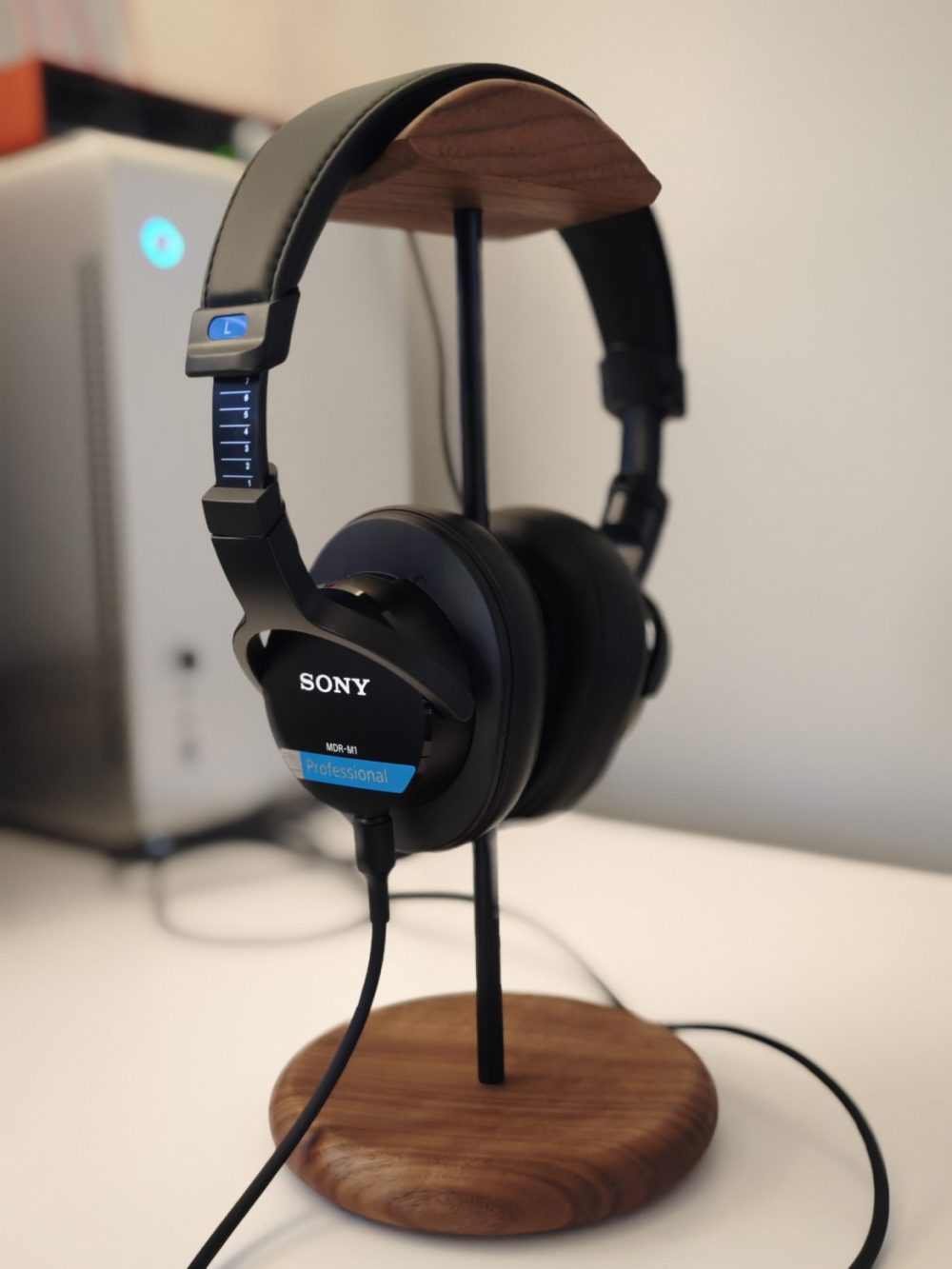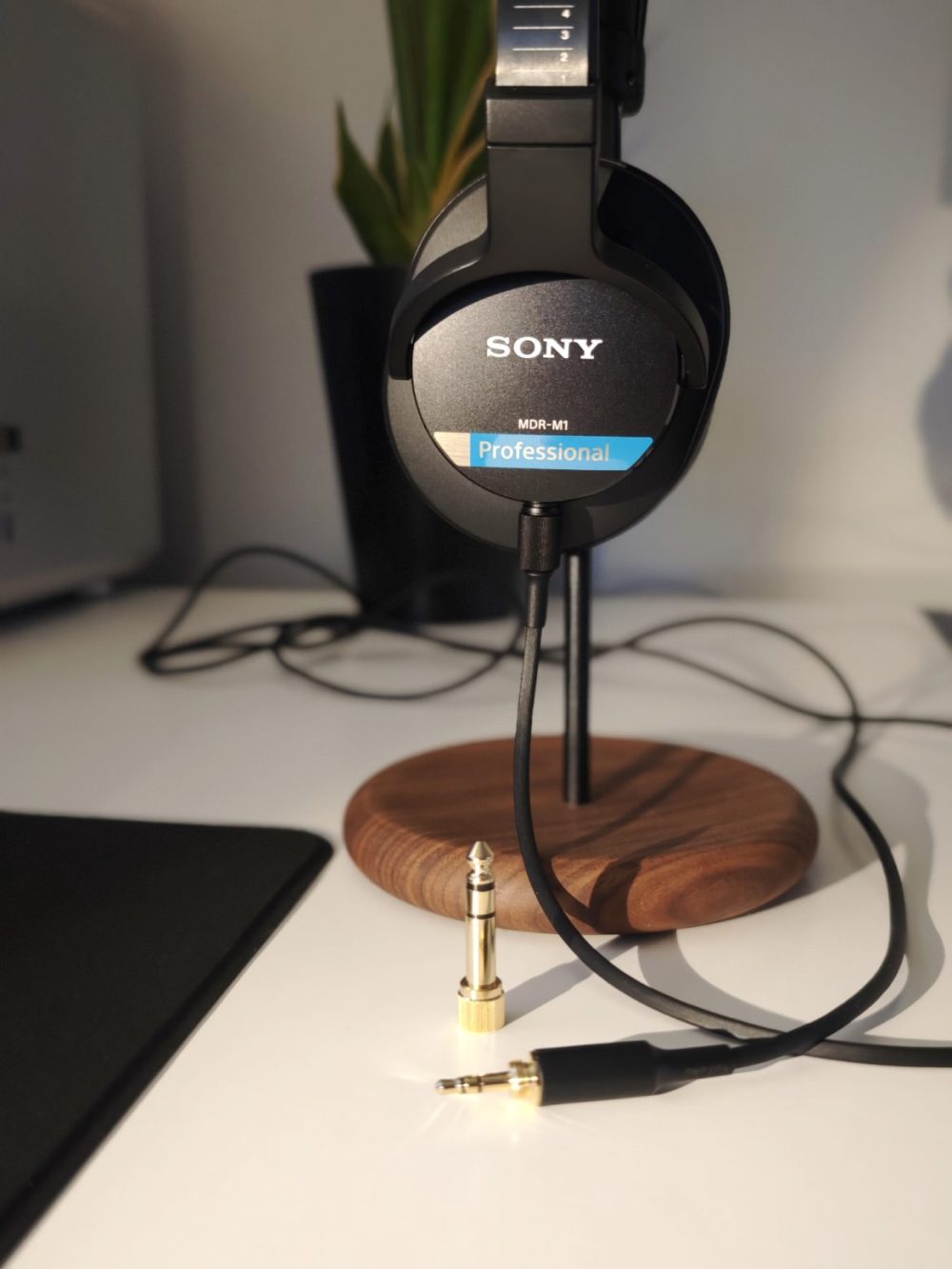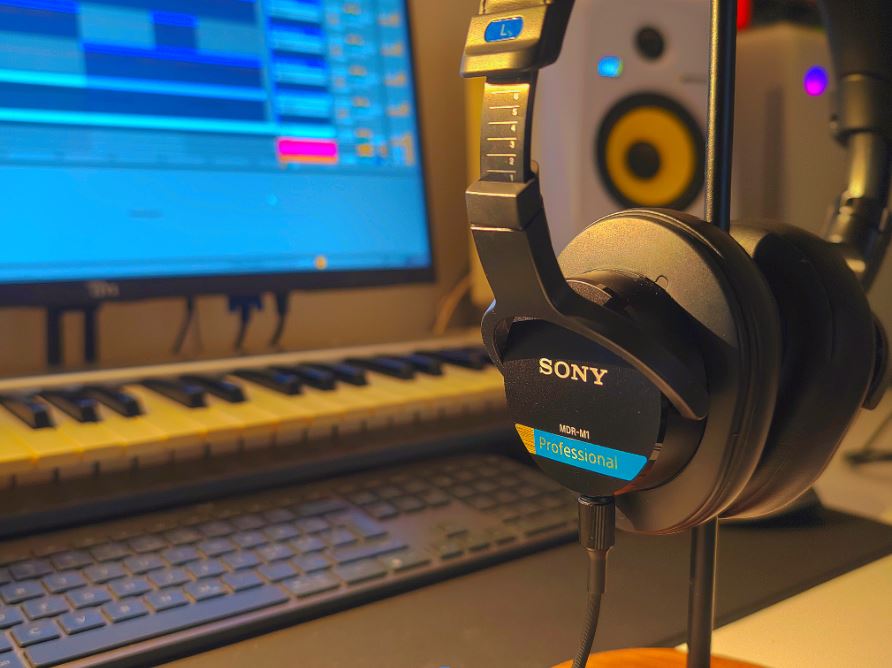TL;DR
Sony's new MDR-M1 studio headphones are lightweight and comfortable, boasting excellent bass and mid-range performance with impressive dynamics. While they offer a detailed and engaging sound, the treble can be somewhat subdued, leaning towards a slightly muffled signature. They compete with established options like the ATH-M50x but come at a higher price point, making their neutrality debatable for demanding studio work. Ready to dive into the nitty-gritty and see if these Sonys hit the mark?
In this review, we examine the Sony MDR-M1, the first set of headphones from Sony’s Professional line that we’ve tested. This line is engineered for optimal performance in studio environments, prioritizing a neutral and transparent soundstage. Launched on September 5, 2024, the MDR-M1 is a closed-back studio headphone. Its open-back counterpart, the Sony MDR-MV1, will also be reviewed on senses.se in the near future.
Feel and First Impression
The initial impression of the Sony MDR-M1 is their lightweight and comfortable design. At 216g, they are only 6g heavier than the Audio Technica ATH-R70x, which are the lightest headphones we’ve tested to date. The generous earcup depth ensures a non-contact fit, and the leather headband and earcup covering contribute to a luxurious feel. As with most closed-back headphones, heat buildup is a consideration. After extended use (one to two hours), the ears may require a brief respite. While the build quality is commendable, the absence of a carrying pouch is a notable omission. Considering the versatility of closed-back headphones beyond the studio, a protective pouch would be a valuable addition.
These headphones are wired, and the package includes 2.5m and 1.2m cables. These cable lengths suggest the intended use case for the Sony MDR-M1. Closed-back headphones are primarily employed in studio environments for production/mixing and monitoring during vocal or instrument recording. Their closed-back design prevents sound leakage into the microphone, a crucial factor when open-back headphones like the Sennheiser HD490 Pro would be unsuitable. The 2.5-meter cable may be somewhat limiting for vocalists or instrumentalists requiring greater freedom of movement, suggesting a stronger focus on production/mixing applications. However, the Sony MDR-M1 is capable of both; a longer cable would simply enhance its usability in recording scenarios.

Technical Details of the Sony MDR-M1
The Sony MDR-M1 utilizes 40mm drivers with Neodymium magnets and features a 50-ohm impedance, making it compatible with a wide range of audio devices. During our testing, we observed that optimal performance was achieved at higher volume levels, where the drivers appeared to exhibit their full potential. As is our standard practice, we performed an overnight burn-in process on the Sony MDR-M1 prior to evaluation. While the impact of burn-in is debated, we found it to positively affect the higher frequencies and overall soundstage clarity in this instance.
The Sound Experience
The Sony MDR-M1 presents a sound profile with both notable strengths and areas for improvement. It exhibits excellent dynamics, a clear and defined bass response, impressive acoustic performance, and a high level of detail retrieval. However, the overall sound signature leans towards a slightly muffled quality. While all frequencies are present, the high-end lacks some brilliance and airiness. A slight treble boost might seem desirable, but is not ideal for headphones intended for neutral monitoring.
For comparison, we evaluated the MDR-M1 against the Audio Technica ATH-M50x, a long-standing favorite among producers and DJs due to its neutral sound, effective isolation, and attractive price point (approximately 1500 SEK). The Sony MDR-M1 generally outperforms the ATH-M50x, though the ATH-M50x offers a slightly more open treble response. The difference is subtle and most noticeable in direct comparisons. A more detailed analysis of each frequency range follows.
High-range
The high frequencies represent the relative weakness of the Sony MDR-M1, although not a significant deficiency. The reproduction of this register is not entirely consistent. For example, Etherwood – Lighthouse sounds better than Agnes Obel – Familiär, which lacks the characteristic detail and nuance. Through repeated listening tests with diverse tracks, ear fatigue breaks, and comparisons with other headphones, the perception of somewhat restrained higher frequencies persisted.
Mid-range
Ralph Vaughan Williams – Van Dieman’s Land, a cello and piano piece renowned for its intimate and detailed sound, effectively tests a headphone’s ability to handle potentially problematic frequencies. The Sony MDR-M1 rendered this piece with exceptional fidelity and clarity. The mid-range felt accurate, without any undue emphasis or exaggeration. Sandquist och Fylkegård – Wanderers provided an immersive and majestic listening experience. This track was an unqualified success, compelling repeated listens.
The only minor drawback observed was a slight dominance of the mid-range within the overall soundstage. As previously noted, the Sony MDR-M1 offers impressive dynamics and acoustic performance, which contributes to this emphasis.
Low-range
The mid-frequencies exhibit excellent synergy with the low frequencies, resulting in a seamless transition. The bass register stands out as a strength of the Sony MDR-M1. It delivers a clear and impactful pressure when called for, without being overbearing. Hans Zimmer – Buyer Beware created the intended sonic spectacle, revealing no discernible flaws. However, when listening to Armin Van Buuren’s 2023 remix of Trevor Guthrie’s – This is what it feels like, the audio experience became particularly engaging. The track offered a wealth of sonic information, and even within this complex arrangement, the high frequencies emerged with greater clarity. The result was a vibrant and detailed soundscape with excellent low-end presence, leaving a positive impression.
The combined soundstage Sony MDR-M1
The overall sound quality is commendable, but the Sony MDR-M1 exhibits a tendency towards a bass- and mid-range-heavy presentation. While overly bright treble is undesirable, the high frequencies, relative to the other registers, sound somewhat subdued.

Conclusion Sony MDR-M1
The Sony MDR-M1 provides an engaging listening experience. The aforementioned strengths contribute to detailed sound reproduction and overall competence. Furthermore, the headphones offer a comfortable and lightweight fit. Do they represent a worthwhile investment? The answer is yes, but with reservations. The Sony MDR-M1 is priced around 2900 SEK, placing it in competition with highly capable alternatives such as the Audio Technica ATH-M50x or the Beyerdynamic DT770 Pro. Paying almost twice as much therefore feels somewhat excessive.
In summary, the Sony MDR-M1 does not offer the most pristine and airy soundstage we’ve encountered. While it excels in dynamics and acoustic reproduction, it falls slightly short in the treble range. The overall sound signature lacks consistent neutrality and varies depending on the genre. It performs best with electronic music but exhibits some muddiness with more acoustic arrangements. Therefore, while occasionally impressive, we are not entirely satisfied with the Sony MDR-M1 as a pair of neutral studio headphones.
Sony provided the review samples for this evaluation. The provision of materials does not influence our editorial independence. We maintain an unbiased perspective, prioritizing the interests of our readers and consumers.

